Going To Market: A Guide to Selling Raw, Processed, and Prepared Food Products from Your Home, at Farmers’ Markets, Stores, and Roadside Stands
ID
ANR-46NP (FST-502NP)

Do I need to be inspected? By whom?
This guide will detail the answers to those questions, which vary depending on the type of food product and preparation process used. All food producers should follow the relevant good manufacturing practices (for example, those outlined in 21 CFR 114 and/or 21 CFR 117). The contact information for permitting and/or inspection requirements is on the last page.
VDACS INSPECTION REQUIRED
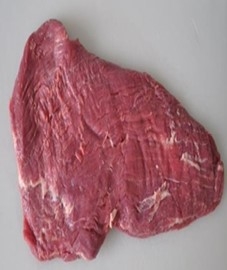
Meat
All meat products (steaks, ground meat, and sausages) that are to be sold must be slaughtered/processed at a USDA/FSIS or VDACS state-inspected facility.
The VDACS - Office of Meat and Poultry Services (OMPS) requires all meat product handlers to register their business and obtain a Meat and
Poultry Handlers Permit. This means anyone selling all “amenable” species of meat and poultry products (cattle, swine, sheep, goats, and poultry (including ratites)). These permits are required for any person engaged in business as a broker, distributor, or peddler of meat and/or poultry products. Also, this includes persons or businesses, door-to-door sales, wholesalers, and owners/operators of public warehouses where meat and poultry products in or for commerce are stored.
All meat and poultry products stored, transported, and offered for sale or sold by a Registered Meat and Poultry Handler must meet all labeling requirements.
Some farmers markets require this permit for all meat and poultry vendors.
Products bearing the VA inspection legend cannot be sold across state lines. However, products inspected by state inspectors (marked with a federal mark of inspection) can be sold across state lines due to the Talmade-Aiken Act.
Exemptions
Custom Exemption - With permit from OMPS, allows businesses to slaughter animals, only for their owner’s consumption (not allowed for reselling), without an inspector present.
Label Must Include
- Product name
- Net weight in U.S. standard weight units and metric units
- List of ingredients, including allergen statement
- Name/address of manufacturer/distributor/packer
- Inspection legend (plant number that the product was produced; indicates the product was inspected)
- Safe handling statement (i.e. keep refrigerated or keep frozen)
Additional labeling such as breed, animal production, and natural claims cannot be added after the product has left the inspected facility. Permit holders may not break bulk packages unless all inside packages contain all required label features and may not open packages, relabel products or further process products.
At Market
Keep frozen products frozen and other products at 41°F or lower.
Please keep your most recent copy of your VDACS permit or, for inspected firms, the VDACS firm permit with you at the market.
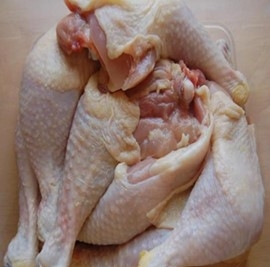
Poultry
Poultry products subject to inspection such as turkeys, chickens, ducks, geese, squab, guinea fowl, and ratites must be inspected by federal or state regulators such as the VDACS OMPS. Products bearing the VA inspection legend cannot be sold across state lines. However, products inspected by state inspectors (marked with a federal mark of inspection) can be sold across state lines due to the Talmade-Aiken Act.
Exemptions
No more than 1,000 birds/year:
- Poultry producer only sells poultry products raised/slaughtered/processed on your own farm
- Only sell in the State of VA
Between 1,001 - 20,000 birds/year:
- Applies to slaughter and processing of poultry raised by the producer grower.
- Slaughter and processes on his/her premises poultry for distribution by them to any person (has to be only distributed in the State of VA)
- OMPS will inspect the facility yearly
- Limitations:
- Slaughter and process no more than 20,000 poultry in a calendar year of their raising on their premises
- The statement “Exempt P.L. 90-492”, producer’s name and address, and the permit number on product label when it is distributed
Custom: With permit from OMPS, allows businesses to slaughter animals, only for their owner’s consumption (not allowed for reselling), without an inspector present.
Label Must Include
- Product Name
- Net Weight in U.S. standard weight units and metric units
- List of ingredients, including allergen statement
- Name/address of manufacturer/distributor/packer
- Inspection legend (plant number that the product was produced; indicates the product was inspected)
- Safe handling statement (i.e. keep refrigerated or keep frozen)
- 20,000 Bird Poultry Exemption Label (if applicable):
- “Exempt P.L. 90-492”,
- Producer’s name and address,
- Permit number on product label when it is distributed.
At Market
Keep frozen products frozen and other products at 41°F or lower. Please keep your most recent copy of your VDACS permit or, for inspected firms, the VDACS firm permit with you at the market.
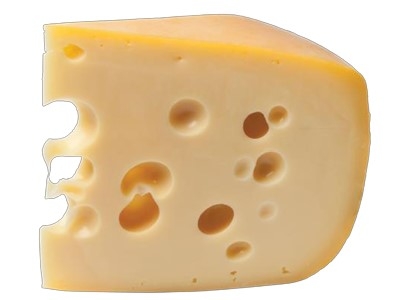
Dairy
All dairy products to be sold must be inspected. Sale of raw milk is prohibited.
Sale of cheese made from raw milk must be aged at least 60 days above 35°F.
Exemptions
All dairy processing facilities need to be inspected by VDACS. However, there may be some exceptions for “small-scale” processors in terms of:
- Facility construction
- Drug residue testing requirements
“Small-scale” facilities classifications:
- 50 gallons of milk at one time:
- Pasteurizes milk for cheese production in one or more vats combining a total capacity of not more than 50 gallons of milk.
- Cheese from unpasteurized milk:
- Processed cheese using unpasteurized milk in lots not greater than 200 gallons if the milk comes from cows, buffalo, or water buffalo.
- Processed cheese from unpasteurized milk in lots not greater than 50 gallons if the milk comes from goats, sheep, or other mammals (except cows, buffalo, water buffalo, and humans).
Label Must Include
- Product name
- If raw milk is used for the cheese, it has to be labeled as “raw aged gouda”
- Net weight in U.S. standard weight units and metric units
- List of ingredients, including allergen statement
- It has to say, “Contains: pasteurized cow’s milk”
- Name/address of manufacturer/distributor/packer or/and permit number (permit number can be used in lieu of the Name/address of manufacturer/distributor/packer information)
- Sell-by date
- Batch code
- Safe handling instructions (i.e., keep refrigerated or keep frozen)
At Market
Keep frozen products frozen and other products at 41°F or lower.
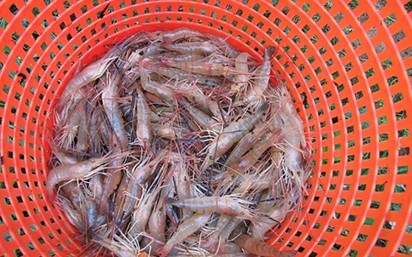
Seafood and Crustacean (Other than Shellfish)
Applies to seafood (other than mollusks and blue crabs) and all seafood products (raw finfish, shrimp, lobster, value-added seafood products (crab cakes, oysters Rockefeller, clam chowder, sushi), etc.). In order to sell, must apply for a permit to VDACS Food Safety Program, and that will determine if a Seafood HACCP Certificate is needed. Contact the VDACS Food Safety Program.
The cooking and picking of crab meat intended for sale directly to the end user requires a permit from the VDACS Food Safety Program.
Exemptions
Depending on the product, VDACS might not require a Seafood HACCP Certificate.
If a fisherman sells seafood (other than mollusks and blue crabs) directly to the end-consumer, VDACS might not require a Seafood HACCP Certificate.
Label Must Include
- Product name
- Net weight in U.S. standard weight units and metric units
- List of ingredients, including sub-ingredients and allergen statement
- When a product contains fish, the type must be listed; e.g. “Contains: Fish (tilapia)”
- When a product contains crustacean shellfish, the type must be listed; e.g. “Contains: Shellfish (shrimp)”
- Name/address of manufacturer/distributor
At Market
Keep frozen products frozen and other products at 41°F or lower. Keep your VDACS permit on hand with you at the market.
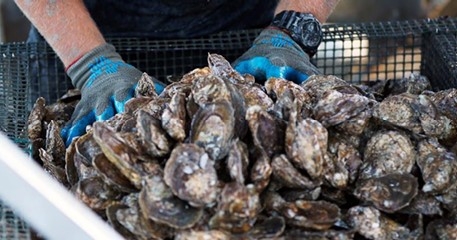
Shellfish: Molluscan and Blue Crab
All molluscan shellfish products to be sold must be obtained from a certified dealer listed on the Interstate Certified Shellfish Shippers List (ICSSL). For molluscan shellfish harvested in Virginia, a Certificate of Inspection (COI) is required from the Virginia Department of Health Division of Shellfish Safety (VDH DSS), and it has to be renewed yearly.
Shellstock oysters, clams, and mussels should be identified with a dealer tag at all times.
A COI from the VDH DSS will be required if:
- Cooking and picking crab meat intended for sale to other businesses (wholesale).
- If selling shellfish right after harvesting.
- If processing shellfish products (such as shucking, repacking, retagging, or labeling, etc.).
- If receiving adductor muscle of scallops and processing.
- If purchasing whole blue crabs and processing by picking and packing the crab meat.
Certificates of inspection for molluscan shellfish, whelk, and scallops are issued from October 1 to September 30, while for crab meat processing are issued from April 1 to March 31. Contact the VDH DSS for more information.
Exemptions
None.
Label Must Include
- Product name
- Net weight in U.S. standard weight units and metric units
- List of ingredients, including sub-ingredients and allergen statement
- Molluscan shellfish (e.g. oysters, clams, mussels, scallops) do not require call-out as an allergen
- Name/address of manufacturer/distributor
- Shellstock tag
- Include the statement “Perishable; keep refrigerated” on the tag in bold print
At Market
Keep frozen products frozen and other products at 41°F or lower.
In the case of live shellfish (shellstock), keep products at 45°F or lower and protect them from coming in direct contact with ice by using a barrier like clean plastic.
Please keep your Certificate of Inspection on hand with you at the market.
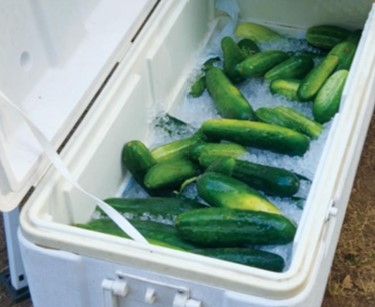
Produce
Produce, in this context, includes fresh fruits and vegetables, mushrooms, sprouts, peanuts, tree nuts, and herbs.
Growers that make >$25,000 (3 yr. avg., adjusted for inflation from 2011) are covered by the Produce Safety Rule. If covered, their farm may need to be inspected depending on the specific crop(s), total sales (3 yr. avg.), and the end user.
All produce farms will need to register with VDACS online at www.VAproducesafety.com
Exemptions
If you grow and sell fresh produce, and make
< $25,000 (3 yr. avg., adjusted for inflation from 2011) in annual sales, you are not covered under the Produce Safety Rule (PSR) and do not need to be inspected.
Label Must Include
Labeling requirements are determined by if your operation is or is not covered under the PSR.
A best practice we recommend is that you display the name and full address of your business on your label or at your farmers market stand.
At Market
Most fruits and vegetables only require basic coverage for protection from outside contamination.
Cut melon, cut leafy greens and cut tomatoes are TCS foods and must be held at 41°F or lower. This applies to samples as well. Vendors selling processed produce (cut melon, cut leafy greens, etc.) would need to be permitted and inspected.
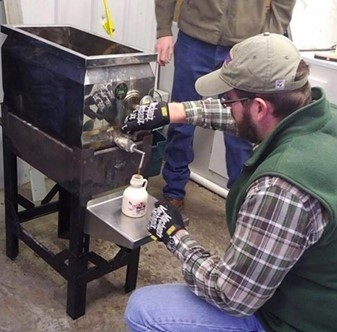
Maple Syrup
Pure maple syrup is defined as a thick, sweet liquid produced from sap extracted from maple trees (primarily from sugar maple). To produce syrup, the sap is processed with heat to concentrate it to no less than 66 percent sugar by weight.
Grading maple syrup is voluntary, and can be graded as “Grade A,” “Processing Grade,” or “Substandard.” Information about grading maple syrup is available from the Agricultural Marketing Service of the United State Department of Agriculture.
Exemptions
None.
Label Must Include
- Product name
- Net weight in U.S. standard weight units and metric units
- List of ingredients, including allergen statement
- Name/address of manufacturer/distributor/packer
- Nutritional labeling (exemptions apply)
- Grade (if graded)
At Market
No special considerations.
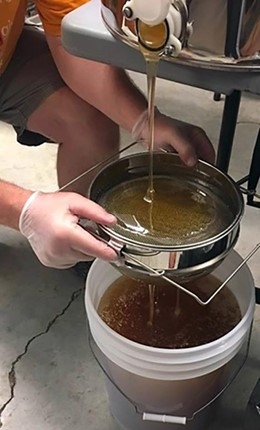
Honey
Honey is a naturally sweet and viscous food created by honeybees.
The flavor of honey is created either naturally from the plants where bees harvest their nectar or through added flavorings.
Exemptions
Those who process and prepare honey in their private residence from hives they own, who sell less than 250 gallons of honey a year, and who do not process or sell other food products (except as noted here) are exempt from inspection. Infused honey products are not exempted.
Label Must Include
- Product name
- Net weight in U.S. standard weight units and metric units; catch weights may also be used
- List of ingredients, including allergen statement
- Name/address of manufacturer/distributor/packer
- Nutritional labeling (exemptions apply)
- If prepared by an exempted operation, the label must bear the statement "PROCESSED AND PREPARED WITHOUT STATE INSPECTION. WARNING: Do Not Feed Honey to Infants Under One Year Old." and include the producers phone number
At Market
No special considerations.

Eggs
The Virginia Egg Law defines standards, grades of eggs, and requirements for eggs that are labeled as fresh.
Exemptions
The Virginia Egg Law will not apply and you will not need inspection if selling less than 150 dozen of your own eggs per week or less than 60 dozen of another producer’s eggs per week.
Label Must Include
- Product name:
- “Eggs” (include species)
- Note: the term “fresh eggs'' can only be used if product meets requirement for Grade A or higher
- Egg count of package (one dozen or half dozen)
- Name/address of manufacturer/distributor/packer
- Grade (AA, A, B) or “Ungraded” if not inspected
- Statement of instructions: “Keep Eggs Refrigerated”
- Following statement, verbatim: “Safe Handling Instructions: to prevent illness from bacteria, keep eggs refrigerated, cook eggs until yolks are firm and cook food containing eggs thoroughly.”
At Market
Eggs must be clean, unbroken, free of dirt and manure, and held at 45°F or lower at all times.
Note: Reusing cartons still bearing the USDA grade shield on them is fraudulent if the eggs were not officially graded by a government official. In addition, reusing egg cartons creates a risk of contamination; consider asking patrons to bring their own.
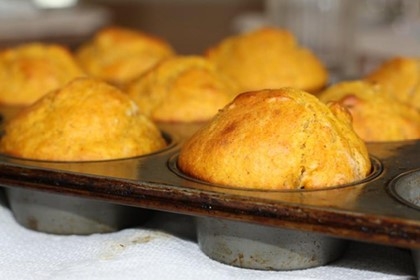
Baked Goods
Unless utilizing an exemption, baked goods not requiring refrigeration must be produced within an inspected kitchen. All baked goods requiring refrigeration for safety must be prepared in an inspected kitchen.
Exemptions
Baked goods not requiring refrigeration for safety can be produced in an uninspected home kitchen and sold directly to the consumer through direct marketing only.
These products cannot be sold wholesale/sold to other businesses (i.e., grocery stores) for resale, on the internet, or across state lines.
Label Must Include
- Product name
- Net weight in U.S. standard weight and metric units
- List of ingredients, including sub-ingredients and allergen statement
- Name/address of manufacturer/distributor/packer
- Code date to identify manufacturing date
- Possibly nutrition facts panel
- If prepared in an uninspected kitchen, the label must bear the statement “NOT FOR RESALE – PROCESSED AND PREPARED WITHOUT STATE INSPECTION” and include the producer’s phone number.
At Market
Cover baked goods to protect them from environmental contaminants, such as flies and dirt.
Note: Determination of the requirement for time/temperature control for safety of baked goods should be made by trained food safety professionals.
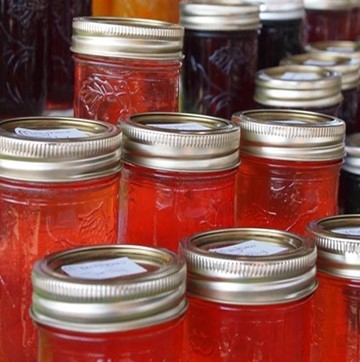
Jams, Preserves, Jellies, and Fruit Butters
Unless utilizing an exemption, products must be produced within an inspected kitchen. Exemption only applies to jams or jellies made from acid fruits.
Preserves, fruit butters or non-fruit products require kitchen inspection and possibly review by a trained food safety professional.
Exemptions
Fruit jams and jellies from acid fruits can be produced in an uninspected home kitchen and sold directly to the consumer through direct marketing only.
These products cannot be sold to other businesses (i.e., grocery stores) for resale, on the internet, or across state lines.
Label Must Include
- Product name
- Net weight in U.S. standard weight and metric units
- List of ingredients, including sub-ingredients and allergen statement
- Name/address of person preparing the product
- Code date to identify manufacturing date
- Possibly a nutrition facts panel
- If prepared in an uninspected kitchen, the label must bear the statement “NOT FOR RESALE – PROCESSED AND PREPARED WITHOUT STATE INSPECTION” and include the producer’s phone number
At Market
Jams, jellies, preserves and fruit butters produced to be shelf stable (canned/jarred) should be stored in cool shady areas. If not processed for shelf stability, such as refrigerated jams, product should be stored under refrigerated conditions such as a cooler with ice. Label should include a “Keep refrigerated” statement as well.
Products offered as samples should be prepped off-site, if possible. Unrefrigerated samples may be left out for tasting no more than 4 hours when they should be discarded.
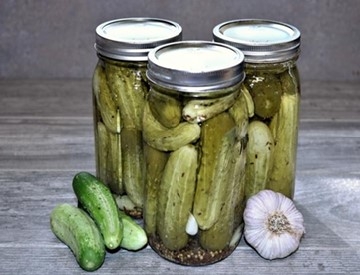
Acidified Canned Foods
Acidified foods are defined as foods that have had acidic ingredients (vinegar, citric acid, etc.) added to low-acid ingredients to create a product with a measured final equilibrium pH 4.6 or below (pH ≤ 4.6).
Specific acidified foods (pickled vegetables, salsa, chow-chow, relishes, for example) can be sold utilizing an exemption ($3,000 sales limit/year). On July 1, 2024, the sales limit will increase to $9,000/year. Other acidified foods must be produced within an inspected kitchen (barbeque sauces, pepper jelly, hot sauces, salad dressings, for example).
Inspected acidified foods must be evaluated by a process authority for safety and shelf stability. Inspected acidified food producers must also comply with acidified food regulations and complete the “Better Process Control School” course.
Exemptions
Acidified vegetables can be produced in an uninspected home kitchen and sold directly to the consumer through direct marketing only.
Must not exceed $3,000 ($9,000 beginning July 1, 2024) in total annual gross sales for all acidified products produced. Inspection exemption does not preclude the processor from the responsibility of producing a safe acidified food. Testing for shelf stability and safety is still recommended. These products cannot be sold to other businesses (i.e., grocery stores) for resale, on the internet, or across state lines.
Label Must Include
- Product name
- Net weight in U.S. standard weight and metric units
- List of ingredients, including sub-ingredients and allergen statement
- Name/address of person preparing the product
- Code date to identify manufacturing date
- Possibly a nutrition facts panel
- If prepared in an uninspected kitchen, the label must bear the statement “NOT FOR RESALE – PROCESSED AND PREPARED WITHOUT STATE INSPECTION” and include the producer’s phone number
At Market
Acidified foods produced to be shelf stable (canned/jarred) should be stored in cool shady areas. If not processed for shelf stability, such as refrigerated pickles, product should be stored under refrigerated conditions such as a cooler with ice. Label should include a “Keep refrigerated” statement as well.
Products offered as samples should be prepped off-site, if possible. Unrefrigerated samples may be left out for tasting no more than 4 hours when they should be discarded.
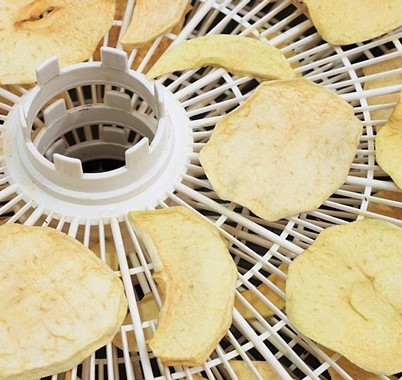
Dehydrated Foods
Dehydrated foods are foods where the available water within a product is removed. It is one of the oldest known methods of food preservation. Many types of foods can be dehydrated, such as fruits and vegetables.
Dehydrated foods are considered lower-risk foods and are exempt from VDACS inspection with certain restrictions.
Exemptions
Certain low-risk foods – as specified in VA Code § 3.2-5130 – can be dehydrated or freeze dried in a private home without VDACS inspection. If dehydrating or freeze drying foods that are not covered by this exemption, it will need to be done under inspection.
Label Must Include
- Product Name
- Net weight in U.S. standard weight units and metric units
- List of ingredients, including sub-ingredients and allergen statement
- Name/address of manufacturer/distributor/packer
- Production date
- If prepared in an uninspected kitchen, the label must bear the statement “NOT FOR RESALE – PROCESSED AND PREPARED WITHOUT STATE INSPECTION” and include the producer’s phone number
At Market
Cover dehydrated foods to protect them from environmental contaminants, such as flies and dirt.
If providing samples, prepare them at your facility prior to arriving at the market.
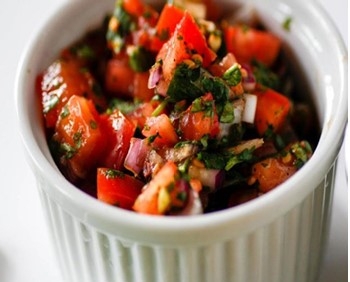
Packaged Refrigerated or Frozen Foods
Examples include dips, spreads, salads, prepared meals, etc. These foods contain a lot of moisture and do not have enough acidity to control microbial growth nor have they been processed to be shelf stable.
All packaged foods requiring temperature control (refrigeration or freezing) for safety must be prepared in an inspected kitchen.
Exemptions
None.
Label Must Include
- Product name
- Net weight in U.S. standard weight and metric units
- List of ingredients, including sub-ingredients and allergen statement
- Name/address of manufacturer/distributor/packer
- Code date to identify manufacturing date
- Possibly a nutrition facts panel
- “Use by” dates
- Seven days for most refrigerated high-moisture foods unless otherwise proven.
- Frozen food that is kept frozen can have a longer shelf life.
The label should also contain safe handling and storage guidance and safe preparation instructions for the consumer.
The statement “Keep refrigerated” or “Keep frozen; thaw or cook according to instructions” should be prominently displayed on the label based upon your approved label and process. You might consider placing this statement on more than one side of your package so that consumers will be more likely to see it.
At Market
Refrigerated foods must be stored at 41°F or lower. This can be accomplished with either a refrigerator or a cooler with ice.
If using ice, the product must be packed in such a way that the water from melting ice drains away from the product and into a designated area or container. Avoid direct contact with water or ice because this could destroy the package; to do this, a secondary container (such as a plastic bag) can be used. Regardless of storage method, a thermometer should be used to verify that food is being maintained at or below 41°F. Check the temperature every hour and keep a record of temperatures to prove the product has stayed below 41°F.
Frozen foods must be kept frozen which is very difficult to maintain without mechanical equipment.
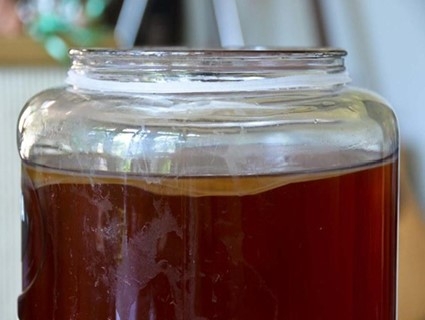
Kombucha
Kombucha must be produced in an inspected kitchen. To protect yourself from regulatory action, you should produce kombucha that does not exceed 0.5% alcohol by volume (ABV) at any time during production, storage, transport or retail sale.
The only reliable way to confirm that your product has less than 0.5% alcohol is to test it. You should test your finished product at the time of bottling as well as the unpasteurized bottled product after weeks of storage. You may have to limit the time for sale at market (shelf life) if the alcohol content rises above 0.5%. Additionally, if at any time during the production, storage, or sale, your kombucha exceeds 0.5% ABV, you will be subject to alcoholic beverage regulation, regardless of whether you dilute the product prior to sale.
Exemptions
None.
Label Must Include
- Product name
- Net contents in U.S. standard volume and metric units
- List of ingredients, including sub-ingredients and allergen statement
- Name/address of manufacturer/distributor/packer
- Code date to identify manufacturing date
At Market
If not pasteurized, kombucha should be stored under refrigerated conditions such as a cooler with ice. Products offered as samples should be prepped off-site, if possible. Un-refrigerated samples may be left out for tasting no more than 4 hours when they should be discarded.
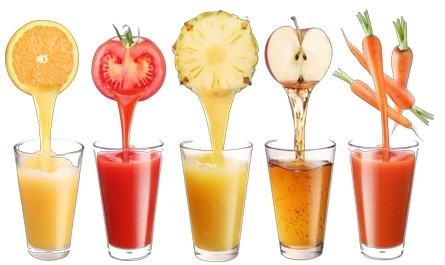
Juice
If you plan to sell/serve juice, you must reach out to VDACS and/or VDH to understand your compliance needs related to permitting/licensing, Juice HACCP, and other applicable regulations.
Packaged/bottled juice: To sell juice, it is necessary to apply for a VDACS Permit Application – Home Food Processing Operation (contact the VDACS Food Safety Program).
Beverage service: To sell juice that is being prepared at the farmers market, you will need to contact VDH.
Exemptions
None.
Label Must Include
- Product name
- Net contents in U.S. standard volume and metric units
- List of ingredients, including sub-ingredients and allergen statement
- Name/address of manufacturer/distributor
- Production date
- “WARNING: This product has not been pasteurized and, therefore, may contain harmful bacteria that can cause serious illness in children, the elderly, and persons with weakened immune systems.”
- NOTE: These juices would be limited to retail sales.
At Market
If serving at the farmers market, cover juices to protect them from environmental contaminants, such as flies and dirt. If providing samples, prepare them at your facility prior to arriving at the market.

Pet Treats
You are required to license and register your products with the Virginia Department of Agriculture and Consumer Services (VDACS) prior to selling. An inspection may be required prior to selling. It is also suggested to contact your local health department for any local inspection requirements.
To obtain a Virginia Commercial Feed License, please visit their website or contact the Virginia Department of Agriculture and Consumer Services, Office of Plant Industry Services.
Exemptions
None.
Label Must Include
- Brand name
- Intended species
- Quantity statement/net weight
- List of ingredients, including sub-ingredients and allergen statement
- Guaranteed analysis
- Calorie Content
- Nutritional adequacy statement
- Name/address of manufacturer/distributor
At Market
Pet food/treats can be sold in individual packages or sold in bulk (self-service style) at the farmers market. If the product requires refrigeration, make sure the product is stored in a cooler at 41°F or below and instruct customers to store at those temperatures following the purchase as well. For non-refrigerated products, store in dry containers that you can keep at room temperature.
Samples
Offering samples of your food is one way to increase interest in your product before customers make a purchase. It is important that you follow safe food handling practices when preparing and offering samples. You can prepare your samples before arriving at the market where you process your foods or at the market. When preparing samples in either environment, you should follow good personal hygiene practices and use cleaned and sanitized surfaces and utensils. You will want to protect your samples from the environment, people, and pests. We suggest you serve your samples using toothpicks or other single-use, disposable utensils. You could also store your samples under a mesh dome, plastic lid, or in covered single-serve containers. NOTE: This does not apply to “value-added” products; vendors can provide samples of their product but cannot, for example, build a sandwich out of their product using purchased ingredients and offer that as a sample.
If you are offering samples of hot food, you must keep them at 135°F or higher. Samples of cold food must be kept at 41°F or lower. If you choose to offer your samples without any temperature control, you can offer them for up to four hours. After four hours, discard any unconsumed samples; they cannot be re-cooled and used again. If outside temperatures are greater than 90°F or higher, then samples can be left out for up to one hour.
Time and Temperature Controlled for Safety (TCS) Foods
TCS foods require temperature control because they are capable of supporting the growth of various infectious microorganisms or toxins. These foods include meats, dairy products, eggs, mushrooms, cut melons, cut tomatoes, cut leafy greens, and heat-treated plant food such as cooked rice, beans, and vegetables. Some baked goods may fall into the TCS category, such as cheesecake, custard, filled cupcakes, etc. Determination of whether or not the item(s) are TCS foods should be made by a trained food safety professional. TCS foods must be kept hot, at 135°F or higher, or cold, at 41°F or lower. Use a calibrated metal stem thermometer to ensure you are meeting the required temperatures. Ice should be drained frequently at an approved dump site.
Food Service Vendors
These individuals prepare food on-site at a farmer’s market (e.g., in a permanent facility, as a temporary food establishment, or as a mobile food establishment). Food service vendors, except those offering for sale primarily packaged food products or samples of such products not subject to Virginia Department of Health (VDH) inspection, must obtain a VDH food establishment permit. The local health department issues these permits and inspects food service vendors. Vendors who do not hold a food establishment or mobile food establishment permit need to apply to the local health department for a temporary food establishment permit and submit the applicable fee at least 10 days prior to operation.
Food service vendors must have:
- An on-site ware-washing set up that includes three basins: one each for washing, rinsing, and sanitizing. The appropriate strength of sanitizing solution should be used and confirmed with the appropriate sanitizer test strips. Wares should be cleaned and sanitized after use with raw animal foods and before use with ready-to- eat foods, including raw fruits and vegetables, or if they have been contaminated.
- An on-site handwashing station is also required. Hands must be washed frequently including before beginning food preparation or putting on gloves; and after eating, drinking, smoking, using the restroom, handling raw animal foods, or whenever the hands may have been contaminated. Avoid bare-hand contact with ready-to-eat foods by using gloves, tongs, deli paper, etc. Don’t work if you are sick.
- Overhead protection for vendor operation is required (tent, canopy, awning, table umbrella, permanent structure, etc.). Food preparation must occur on smooth cleanable surfaces such as tables. Slicing must be done on cutting boards. Use wrapping or other effective barriers to protect from customer handling. Stored food should be in a clean, dry location, at least 6 inches off the ground.
- At least one employee who is a certified food protection manager, meaning they have passed a food protection manager certification program recognized by the Virginia Department of Health (e.g., the ServSafe® Food Protection Manager certification).

Additional Resources
Virginia Tech Food Producer Technical Assistance Network: https://www.fst.vt.edu/extension/foodbiz.html
- Note: Please select "Request an evaluation" and complete the survey to request sample testing. Questions may be asked by emailing foodbiz@vt.edu.
Virginia Farmers’ Market Association: http://www.vafma.org/
Virginia Department of Health - Food Safety in Virginia: https://www.vdh.virginia.gov/environmental-health/food-safety-in-virginia/
Virginia Department of Agriculture and Consumer Services - Home and Commercial Kitchen-Based Businesses: https://www.vdacs.virginia.gov/dairy-kitchen-food-services-businesses.shtml
Virginia Department of Agriculture and Consumer Services - Farmers Market Vendors: https://www.vdacs.virginia.gov/dairy-farmers-market-vendors.shtml
Acknowledgments
We would like to acknowledge Cathryn Kloetzli and Rachel Wallace for originally creating this publication, and Alexis Hamilton, Ph.D. as well as our colleagues at VDH and VDACS who reviewed this publication.
Virginia Cooperative Extension materials are available for public use, reprint, or citation without further permission, provided the use includes credit to the author and to Virginia Cooperative Extension, Virginia Tech, and Virginia State University.
Virginia Cooperative Extension is a partnership of Virginia Tech, Virginia State University, the U.S. Department of Agriculture (USDA), and local governments, and is an equal opportunity employer. For the full non-discrimination statement, please visit ext.vt.edu/accessibility.
Publication Date
December 13, 2024



